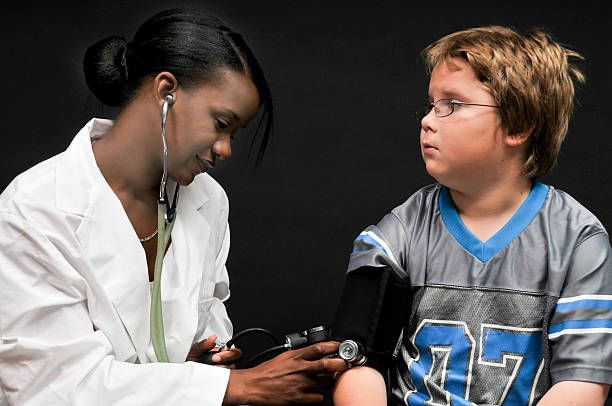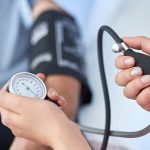What is high blood pressure in kids?
High blood pressure (hypertension) in children is blood pressure that is at or above the 95th percentile for children who are the same sex, age and height as your child. There isn't a simple target range for high blood pressure in all children because what's considered normal changes as children grow.
How do I know if my child has high blood pressure?
Most of the time high blood pressure doesn't cause symptoms. In rare cases, severe high blood pressure can cause headaches, blurry vision, dizziness, nosebleeds, a fluttering or racing heartbeat, and nausea. If your child has high blood pressure and gets any of these symptoms, get medical care right away
When the topic of blood pressure comes up, the focus is usually centered on the health effects and treatment strategies of high blood pressure, or hypertension, in adults. But children can also have abnormal blood pressure readings which can negatively impact long-term health. What's normal, and what's not, is summarized in clinical practice guidelines published in the August 2017 issue of "Pediatrics."
When the heart beats, it pushes blood throughout the body, delivering oxygen, energy and other nutrients. As this blood flows, it exerts pressure against the walls of the blood vessels. This blood pressure is categorized as systolic, which is the pressure when the heart beats, and diastolic, the pressure when the heart relaxes. Blood pressure is reported as two numbers -- the systolic over the diastolic pressure. A blood pressure reading of 120/80 means the systolic pressure is 120 and the diastolic pressure is 80. It's important to strive for normal or near-normal blood pressure readings, as high blood pressure, the most common blood pressure abnormality, increases the risk of heart disease, kidney damage, stroke and other health problems.
Pediatric blood pressure tables categorize this vital sign according to normal and abnormal levels. These charts, based on data summarizing the normal distribution of blood pressure readings in healthy, normal weight children, group blood pressure levels according to age, height and gender. An important distinction in the most recent tables is that blood pressure levels of overweight children were not included in their creation, since extra body fat can increase blood pressure. As a result, the normal blood pressure readings in the 2017 blood pressure tables are a bit lower compared to previous guidelines, which included data from both normal and overweight children.
Interpreting Blood Pressure Readings
For children aged 1 to 13, the 50th percentile range on the blood pressure tables is considered normal, while elevated blood pressure is anything above the 90th percentile. What's normal can vary considerably, as these charts group blood pressure in 7 different height categories for each age. Thus, comparing blood pressure readings to these tables is essential when interpreting the results.
Normal Blood Pressure in Boys
Using the blood pressure tables, below is a sampling of normal blood pressure ranges for boys:
- Normal blood pressure in 1-year-old boys ranges from 85 to 88 for systolic pressure, and 40 to 42 for diastolic pressure.
- For 6-year-old boys, normal systolic pressure ranges from 93 to 97, while the 50th percentile for diastolic blood pressure falls in the range of 54 to 57.
- Normal blood pressure in 12-year-old boys ranges from 101 to 108 systolic pressure over 61 to 63 diastolic pressure.
Normal Blood Pressure in Girls
Below is a sampling of normal blood pressure ranges for girls:
- Normal blood pressure in 1-year-old girls ranges from 84 to 88 for systolic pressure, and 41 to 45 for diastolic pressure.
- For 6-year-old girls, normal systolic pressure ranges from 92 to 97, while the 50th percentile for diastolic blood pressure falls in the 54 to 58 range.
- Normal blood pressure in 12-year-old girls ranges from 102 to 108 systolic pressure over 61 to 65 diastolic pressure.
To provide early detection and treatment of blood pressure problems, the American Heart Association recommends all children aged 3 and older have their blood pressure measured annually. Blood pressure should be checked at every clinic visit in children who are living with obesity, and in children who have medical conditions or take medications that may be associated with hypertension. Achieving normal blood pressure levels is important for health, so if your child has elevated blood pressure, follow the treatment plan recommended by his pediatrician.










